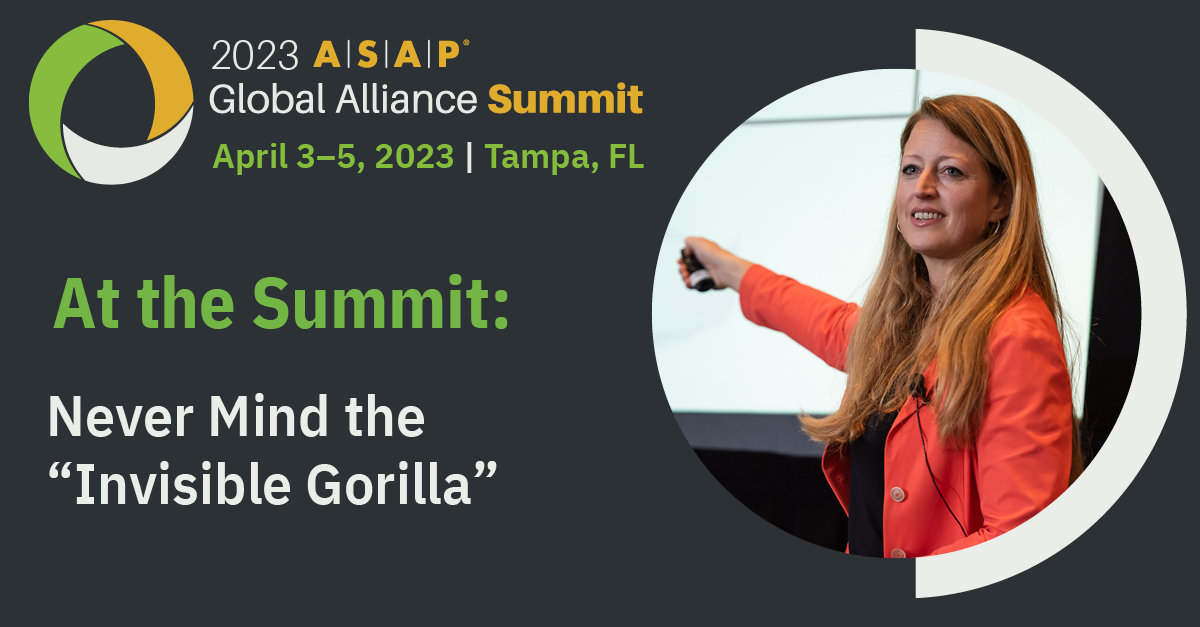Never Mind the “Invisible Gorilla”
As humans, we pride ourselves on our status as the only rational beings. (As decided by…us.) But most of us know we don’t always act rationally. Sometimes we don’t think so much as react, out of pure reptilian-brain emotion or fight-or-flight instinct. Sometimes we give reasons for our actions after the fact that may be partly true, but are more in the nature of postgame rationalizations and plausible narratives grafted on to what was in essence an emotional or instinctive, “gut” decision. (Research has been done on this, but you'll have to take my word for it for now.)
But what if we could see things with a bit more clarity? What if we could boil down decisions or conflicts—in an alliance, let’s say—to a more rational analysis that took account of the various factors at play, the goals of each party, the options available, and what outcomes they each might yield?
Play It as It Lays
“Play,” it turns out, is the appropriate word here, because we’re talking about game theory. Stefanie Schubert, CA-AM, PhD, professor of economics at SRH University Heidelberg and an executive coach and negotiation advisor, broke it all down for us in Tampa on day two of the ASAP Global Alliance Summit. “Alliance Friction? Game On!: Applying Game Theory to Understand and Resolve Alliance Conflict” laid out in fascinating detail some of the key (and even unexpected) considerations involved when you apply the findings from game theory to the thorny issues that beset many collaborations.
Among the key takeaways:
- Conflicts can arise for many reasons, from groups competing for scarce resources to group self-identification and prejudice to a “zero-sum mindset” to lack of trust and cultural clashes.
- When deciding what to do to resolve a particular conflict, it’s best to look at who decides, when, and what all your options are, as well as the “payoffs” or outcomes each of them may render.
- But at the same time, remember that your partner has options and decisions to make as well, and in an alliance, as Schubert rightly noted, “The outcome of your decision depends on the decision of someone else.”
- If you don’t particularly like the results of the above analysis, Schubert said that “it may be possible to change the game so you get a better outcome for both parties.” That might mean a more collaborative solution, a more innovative approach, or one that is more creative and thinks outside the box.
- John Nash—the mathematician whose life was the subject of the film A Beautiful Mind, won the Nobel Prize for his work in game theory, specifically on the distinctions between cooperative and noncooperative games.
- Finally, for extra credit, did you know that perhaps the most important requirement for winning the Nobel Prize is to be alive? There’s an important lesson here. (Cue the BeeGees…)
If You Come to a Fork in the Road, Take It
Schubert introduced the audience to a fictitious case study examining the potential actions taken by a US pharma company (licensor) and a Japanese pharma company (licensee) in a case where a new regulation in Japan changes how a drug product must be formulated—a situation not covered in the contract—leaving the Japanese firm holding the bag, a bag full of drugs they can’t sell. What does the US company do about it? Say it’s not their problem? Tell them to pound sand? Seek concessions? Insist on following the letter of the agreement? Or perhaps look for some more collaborative approach?
The point of course is not what they “should” do but how they might arrive at their decision, based on costs, outcomes, goals, motives, and other factors—including what they deem to be important (or not). As part of this process, Schubert urged looking at objectives—first the “rational layer” of objectives, which might be outcome-related, process-related, or “other.” Then one has to turn to “unconscious biases”: What do we think is going on? Why do we think that? What are we missing?
On that last score, Schubert mentioned a study that became a YouTube video in which those watching were shown three people wearing white shirts and three wearing black shirts and asked to count how many times one group passed a ball to one another. At the end they were asked, “Did anyone see the gorilla?” Yes, a person in a gorilla suit came into the picture at one point, but most people completely missed it since they were intent on counting the passes.
As alliance professionals, even if we haven’t seen it all, we have to try to see it all: all the factors, the motivations, the options, the potential outcomes, even as we're passing balls back and forth and juggling many of them at the same time. But as Schubert vividly demonstrated, in alliances as in life, we can miss a lot, blinded by the light. The other side of that was perhaps put most succinctly by the great baseball sage Yogi Berra, who said, “You can observe a lot just by watching.”
If you were as invisible as that gorilla and missed this year’s Summit and couldn’t watch—well, you can live vicariously by dipping into the ASAP Blog liberally, coming back early and often. Check us out for continuing coverage, even after all the good alliance fun in Tampa comes to an end!

